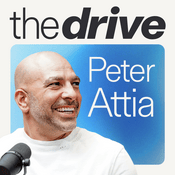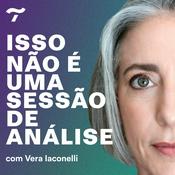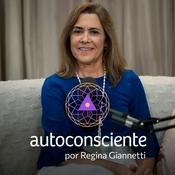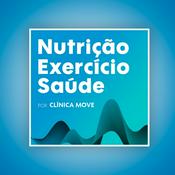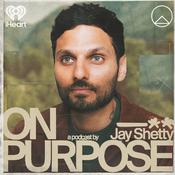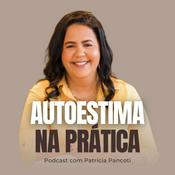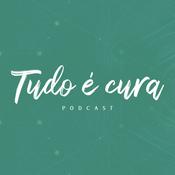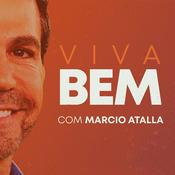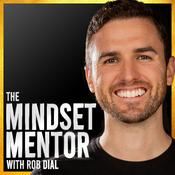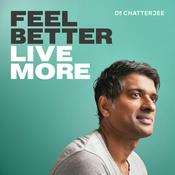Mind Body Marathon: Running, Health & Human Performance
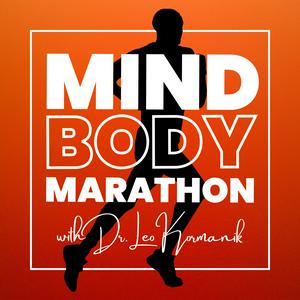
88 episódios

Winter Workouts: Strategies for Staying Fit in the Cold with Dr. Leo Kormanik and Dr. Jared Bugaj
23/12/2025 | 23min
Struggling to stay motivated in winter? This episode breaks down how simple consistency and community keep runners strong year-round.The conversation today centers on the vital theme of winter workouts, emphasizing the necessity for consistency and creativity in maintaining an active lifestyle during the colder months. Dr. Jared Bugaj shares his insights on the importance of simply getting out the door, even for brief runs, as a means to cultivate a habit that fosters long-term fitness. He suggests that runners should seek out safe, well-maintained routes for training, advocating for the use of fartlek workouts to add variety and enjoyment to the regimen. Furthermore, both Dr. Bugaj and I stress the psychological benefits of community engagement in running, highlighting the value of camaraderie during the winter season. Ultimately, this episode serves as a guide to navigating the challenges of winter training while remaining motivated and connected to the running community. The dialogue between Dr. Leo Kormanik and Dr. Jared Bugaj serves as an insightful guide for runners navigating the challenges of winter training. Dr. Bugaj, who is currently in exceptional shape, articulates the necessity of endurance and consistency in maintaining a training regimen during the colder months. He stresses that the mere act of stepping outside to run, regardless of the distance, can yield significant improvements in fitness over time, likening it to a steady investment that reaps rewards as one continues to engage with the sport. Throughout the episode, the hosts explore various strategies to make winter workouts both effective and enjoyable. Dr. Bugaj offers practical advice on finding safe and consistently cleared routes for running, suggesting that runners establish a familiar loop to enhance their winter experience. He introduces the concept of fartlek workouts as a way to incorporate variety and spontaneity into training, urging listeners to embrace the freedom of altering pace during runs. This not only keeps the workouts engaging but also allows for adaptability in the face of unpredictable weather conditions. In addition to the physical aspects of winter training, the hosts delve into the social dynamics of running during this season. They highlight the importance of community and how joining group runs can alleviate the mental burden of training alone in inclement weather. The shared experiences foster camaraderie, making the challenges of winter training feel more achievable. Ultimately, the discussion encapsulates the notion that winter workouts, though demanding, can be transformed into an opportunity for personal growth and connection within the running community.Takeaways:Consistency in winter workouts is paramount; even short runs are beneficial for maintaining fitness levels.Finding safe and well-maintained paths greatly enhances the winter running experience, making it more enjoyable.Incorporating varied workouts such as fartlek can break the monotony and improve running performance during winter.Engaging in community runs fosters camaraderie and motivation, making winter training more enjoyable and less isolating.

Navigating Winter Running: Treadmill or Outdoors?
16/12/2025 | 25min
The ultimate running question in the dead of winter, treadmill or brave the cold outside?In this dialogue, Dr. Leo Kormanik engages with Dr. Matt Pisanelli to explore the nuanced distinctions between treadmill running and outdoor running during the winter months. The primary assertion conveyed is that while both modalities possess unique benefits and drawbacks, the choice between them is heavily contingent upon individual circumstances, particularly regarding training variety and injury considerations. Dr. Pisanelli elucidates that variety in training surfaces and conditions is paramount to mitigating injury risk, emphasizing that exclusive reliance on either a treadmill or outdoor routes may not yield optimal outcomes. Furthermore, the conversation delves into the physiological implications of running on varying surfaces, particularly in relation to the mechanical forces exerted on the body. Ultimately, the discussion serves as a comprehensive guide for athletes and enthusiasts alike, navigating the complexities of winter running and the strategic integration of treadmill workouts into their training regimens.The discourse between Dr. Leo Kormanik and Dr. Matt Pisanelli delves into the dichotomy of treadmill running versus outdoor running during the winter months, particularly in the challenging climate of Northeast Ohio. The episode articulates the nuanced mechanical forces at play in both modalities, with an emphasis on the need for variety in training to mitigate the risk of injuries. Dr. Pisanelli elucidates that while treadmill running may provide a controlled environment, it does not adequately replicate the diverse stimuli encountered in outdoor running, which is crucial for developing the body’s adaptability and resilience to various terrains. The discussion further highlights how the repetitive nature of treadmill running can lead to overuse injuries, especially for individuals with pre-existing conditions affecting the posterior chain, such as Achilles tendinopathy or hamstring strains. The hosts also consider the psychological benefits of running outdoors, which can foster a sense of accomplishment and mental fortitude, especially when faced with the rigors of winter weather. Ultimately, the episode underscores the importance of strategic training that balances both treadmill and outdoor sessions, advocating for an individualized approach to running that caters to one's unique circumstances and goals.Takeaways: The choice between treadmill running and outdoor running in winter largely hinges on individual circumstances, including injury history and weather conditions. Variety in training surfaces and environments is essential to avoid overuse injuries, and both treadmill and outdoor running offer unique benefits. Treadmill running can be advantageous for individuals recovering from certain injuries due to its controlled environment and reduced impact forces. Outdoor running in winter can enhance mental resilience and provide an invigorating experience, despite the challenges posed by harsh weather conditions.

Leveraging AI for Accelerated Recovery: A Guide by Dr. Leo Kormanik
09/12/2025 | 23min
Ever wonder how to best utilize AI or chatbots to help you recover quicker from an injury?Dr. Leo Kormanik articulates his perspectives on the optimal employment of artificial intelligence (AI) to enhance rehabilitation processes. He elucidates that individuals frequently resort to AI tools, such as chatbots, for guidance concerning their physical ailments, including back and knee pain. Kormanik emphasizes the necessity of discerning the information provided by AI, advocating for a comprehensive understanding of joint health, the treatment of soft tissue, and the importance of addressing muscle imbalances rather than simply relying on exercises. He contends that with a judicious approach to utilizing AI, individuals can significantly expedite their recovery from injuries. This episode serves as a foundational discourse on how to navigate the intersection of healthcare and technology, ultimately positioning AI as an ally in the rehabilitation journey.Dr. Leo Kormanik articulates a profound discourse on the integration of artificial intelligence (AI) within the realm of rehabilitation. He posits that, in an age where individuals frequently seek guidance from AI platforms regarding their health concerns, it becomes imperative to discern the efficacy and accuracy of the information provided. Through an exploration of personal anecdotes and empirical observations, Dr. Kormanik emphasizes the necessity of understanding the limitations of AI-generated responses when it comes to rehabilitation protocols. He delineates the critical factors that influence recovery, such as the paramount importance of joint health, the need for targeted soft tissue treatment, and the misinterpretation of pain as weakness. By elucidating these concepts, Dr. Kormanik aims to empower the audience to utilize AI not merely as a source of information but as a complement to professional medical advice, thereby fostering a more informed approach to personal health management in rehabilitation contexts.Takeaways: Dr. Leo Kormanik emphasizes the importance of understanding how AI can assist in rehabilitation by providing accurate and relevant information pertaining to specific injuries. One must prioritize joint health, as the majority of soft tissue injuries stem from underlying issues with the associated joints, necessitating treatment of both for effective recovery. It is crucial to actively treat soft tissue rather than solely performing exercises, as this approach significantly expedites the healing process for injuries. Individuals often misinterpret their pain as weakness in the affected area, when in fact, soreness frequently reflects overuse or strain rather than inherent weakness. Links referenced in this episode:amazon.compubmed.ncbi.nlm.nih.govyoutube.com/runningrehabCompanies mentioned in this episode: chat GPT Grok USA Track Amazon

Conquer Your Mind: Breathing Strategies for Race Readiness with Dr. Leo Kormanik
02/12/2025 | 33min
Ever wonder how to get your mind right before a sports performance?Ever wonder how to utilize breath work to optimize performance?Dr. Leo Kormanik elucidates the pivotal role of breathing techniques in enhancing sports performance, particularly in the context of racing. He emphasizes that the mental preparation before an event is as critical as physical training, advocating for the use of structured breathing exercises to optimize one's mental state and physiological readiness. Kormanik outlines specific techniques, such as box breathing for those experiencing anxiety and the Wim Hof method for athletes seeking to elevate their energy levels. By integrating these breathing strategies with visualization, athletes can cultivate a profound sense of control, enabling them to navigate the psychological and physical demands of competition with greater efficacy. This episode serves as an indispensable resource for athletes aspiring to harness the transformative power of breath work to achieve peak performance.In this insightful discussion, Dr. Leo Kormanik elucidates the crucial intersection of breath work and athletic performance, providing valuable techniques for athletes to employ in the moments prior to competition. He begins by addressing the psychological aspects of racing, emphasizing the necessity for athletes to cultivate a robust mental framework that is independent of external expectations. The ability to harness one's mental state is portrayed as foundational to achieving peak performance, with Dr. Kormanik advocating for a proactive approach that prioritizes an internal locus of control. Central to the episode are the breathing techniques that Dr. Kormanik proposes. He elaborates on the 'box breathing' method, which serves as a powerful tool for athletes grappling with anxiety. This structured breathing pattern, characterized by equal counts of inhalation, retention, and exhalation, can effectively stabilize emotional responses and enhance focus. Conversely, for athletes who approach competition with a relaxed disposition, the 'Wim Hof breathing' technique is recommended to stimulate the sympathetic nervous system and elevate energy levels, thereby preparing the athlete for the physical demands of their event. In summary, this episode is a treasure trove of practical insights and methodologies for athletes aiming to refine their performance through intentional breathing practices. By incorporating these techniques, athletes can not only improve their physical capabilities but also fortify their mental resilience, leading to more consistent and successful outcomes in competitive settings.Takeaways: Dr. Leo Kormanik emphasizes the significance of breath work and visualization in preparing for races. The importance of shifting mental focus from external pressures to personal goals is paramount for optimal performance. Utilizing breathing techniques like box breathing can help lower anxiety and balance the nervous system before competitions. Implementing a structured visualization strategy can enhance mental preparedness for various race scenarios and challenges. For those approaching a race with confidence, the Wim Hof breathing technique can effectively stimulate the nervous system to enhance performance. Integrating mindfulness and awareness of body mechanics can prevent over-reliance on specific muscle groups, improving overall race efficiency.

Unlocking Optimal Mitochondrial Function: Key Factors for Enhanced Wellness
25/11/2025 | 30min
Ever wonder how to get more energy and have a longer health span? The secret is mitochondrial health.Mitochondrial health serves as a cornerstone for optimal physical performance and overall vitality, a notion that we explore in depth during this enlightening discussion. In the company of esteemed guests Dr. Jared Bugaj and Dr. Matt Pisanelli, we delve into the myriad factors that contribute to the enhancement of mitochondrial functionality. Among the pivotal topics addressed are lifestyle modifications, dietary considerations, and environmental influences that may either augment or detract from mitochondrial efficiency. Notably, we emphasize the significance of regular aerobic exercise and high-intensity interval training as mechanisms for promoting mitochondrial biogenesis. Our discourse further elucidates the role of specific nutrients and supplements, alongside the implications of stress management and systemic health, thereby providing a comprehensive framework for fostering mitochondrial well-being.naThe intricate interplay between lifestyle, dietary choices, and environmental factors in relation to mitochondrial health is the focal point of our latest dialogue. Within this episode, I, alongside my distinguished colleagues Dr. Jared Bugaj and Dr. Matt Pisanelli, embark on an exploration of the mitochondria's essential role as the cellular powerhouse, responsible for generating adenosine triphosphate (ATP), the primary energy currency that sustains life. We initiate our discussion by elucidating the fundamental characteristics of mitochondria, including their prevalence across various cell types and their pivotal function in energy metabolism. A significant portion of the conversation is dedicated to the impact of physical activity on mitochondrial biogenesis, where we delineate the benefits of both aerobic exercise and high-intensity interval training (HIIT). Such activities are essential not only for enhancing mitochondrial density but also for improving their functional efficiency, which is crucial in combating the effects of aging and promoting overall health. Furthermore, we delve into the dietary components that fortify mitochondrial health, emphasizing the importance of essential nutrients such as coenzyme Q10 and various B vitamins. The dialogue extends to cover environmental influences, notably the effects of thermal exposure on mitochondrial function. By assimilating these perspectives, we aim to impart practical insights that empower our listeners to adopt strategies fostering enhanced mitochondrial health, which is integral to achieving optimal physical performance and longevity.Takeaways: Mitochondria serve as the powerhouses of our cells, producing ATP, which is essential for life. Aerobic exercise, particularly Zone 2 training, significantly enhances mitochondrial biogenesis and overall health. The incorporation of high-intensity interval training (HIIT) can double mitochondrial production through hormonal stimulation. Dietary factors such as CoQ10, B vitamins, and antioxidants are critical for maintaining optimal mitochondrial function.
Mais podcasts de Saúde e fitness
Podcasts em tendência em Saúde e fitness
Sobre Mind Body Marathon: Running, Health & Human Performance
Ouça Mind Body Marathon: Running, Health & Human Performance, The Peter Attia Drive e muitos outros podcasts de todo o mundo com o aplicativo o radio.net

Obtenha o aplicativo gratuito radio.net
- Guardar rádios e podcasts favoritos
- Transmissão via Wi-Fi ou Bluetooth
- Carplay & Android Audo compatìvel
- E ainda mais funções
Obtenha o aplicativo gratuito radio.net
- Guardar rádios e podcasts favoritos
- Transmissão via Wi-Fi ou Bluetooth
- Carplay & Android Audo compatìvel
- E ainda mais funções


Mind Body Marathon: Running, Health & Human Performance
baixe o aplicativo,
ouça.
